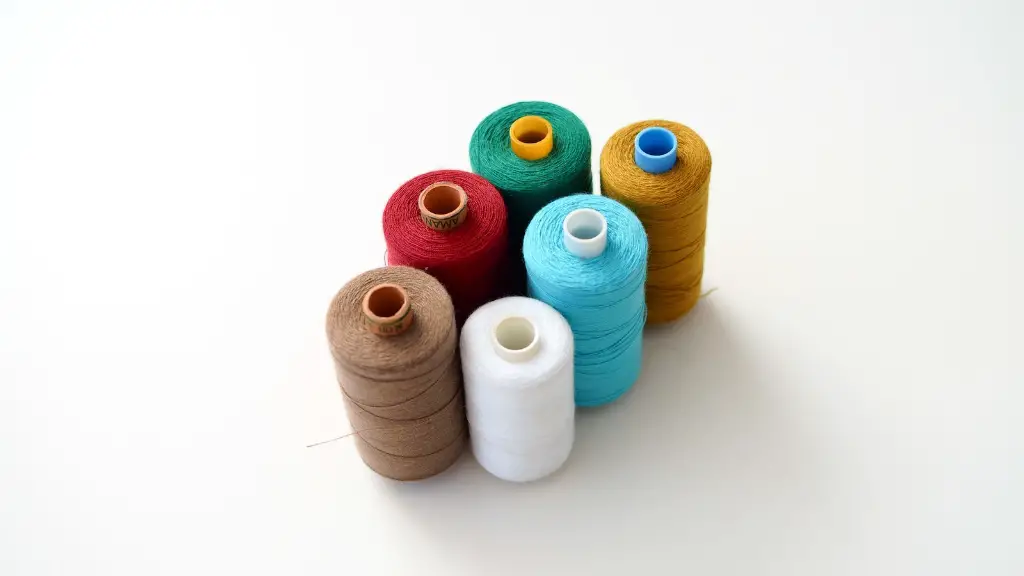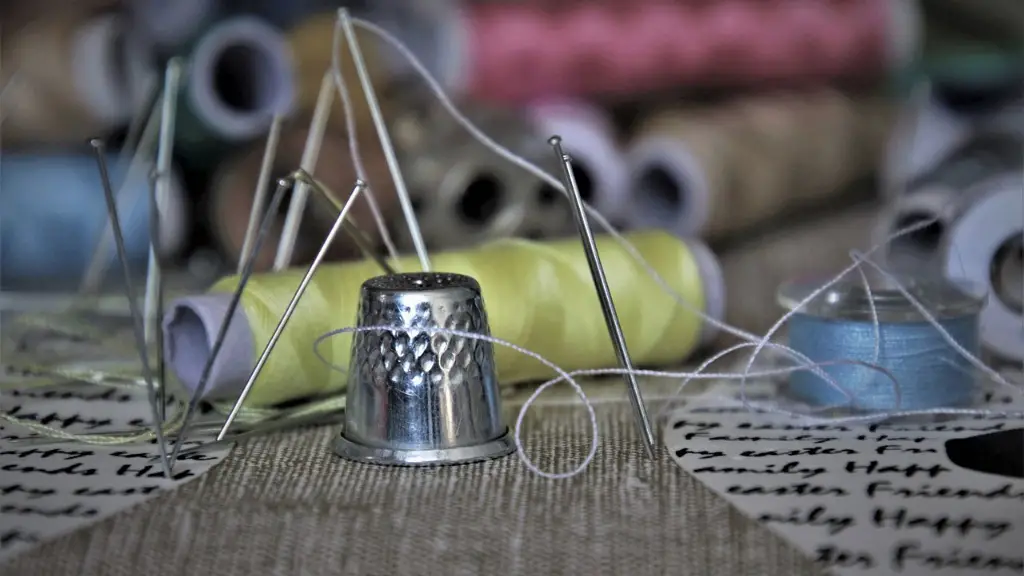Serger thread is not meant to be used regularly on a standard sewing machine; any experienced sewer will tell you that. But why is this the case? Generally, it’s because serger thread is both thinner and stronger than standard sewing machine thread and could easily break standard sewing machines. But this doesn’t mean you can never use serger thread on a regular machine; so, what can you do to make it work?
When serger thread is used in place of regular sewing machine thread, you are usually pushing the regular machine way past its recommended limits. It may seem like a great idea to harness the strength of serger thread, but keep in mind that the thread is designed to function in a particular way and using it in any other way runs the risk of damaging the machine.
One of the main advantages of using serger thread on a regular sewing machine is that it will hold up better to heavier fabrics and will also increase stitches per inch. This is great if you are working on a particular type of fabric that needs a little extra attention, but will also help when working with thin fabrics as well since it won’t break with the added tension.
On the other hand, serger thread is prone to knotting and tangling more easily than regular thread. This is because the thread is thinner and is less likely to move freely within the machine’s tension system. Therefore, it may require frequent center rethreading or inspection to make sure everything is properly aligned.
Moreover, it’s important to note that since serger thread is more prone to knotting and tangling, it would be wise to use it on a machine with a well-maintained tension system. Therefore, a standard sewing machine that hasn’t been serviced recently might not be the best choice when using serger thread.
In conclusion, serger thread can be used on a regular sewing machine if the machine’s tension system is well-maintained and if the user is careful not to over-stress the machine. However, it is generally not recommended for regular sewing machines, since the serger thread is thinner and stronger than standard machine thread.
Alternatives to Serger Thread
Experienced seamstresses and tailors know that sometimes regular sewing machine thread isn’t strong enough while using multiple layers of fabric. Luckily, there are several alternatives which can be used as a substitute for serger thread when working on thicker or heavier fabrics. These alternatives can be used to reinforce seams or provide extra strength to keep fabrics together.
One of the most common alternatives to serger thread is a heavy-duty thread. While it’s not as strong as serger thread, it is thicker and can easily be used on a regular sewing machine. Additionally, if you don’t want to use a heavy-duty thread, you can opt for a thicker thread like cotton or linen. These threads can provide extra reinforcement to high-stress areas and are especially effective when working with heavier fabrics.
Another option is to use a topstitching thread. Topstitching thread is a type of thread that is heavier and more durable than the regular sewing machine thread. It is specifically designed to be used with heavier and thicker fabric and can provide extra strength and stability to seams and stitch lines.
Finally, if you’re looking for a lightweight and strong thread, you might want to consider using a monofilament thread. This type of thread is similar to regular sewing machine thread but it is thinner and stronger. It is perfect for light fabrics and can also be used to give garments extra support, while maintaining the breathability of the fabric.
Cleaning & Maintenance Preceding Use of Serger Thread
Prior to using serger thread in any sewing machine, it is important to do some basic cleaning and maintenance. This is especially important when it comes to standard sewing machines, since serger thread is thinner and stronger than the standard machine thread, which could easily break the machine if it isn’t properly maintained.
The first step would be to check for any debris like dust, lint, or any tangled thread bits in the needle throat plate. This is important because these can cause tension issues and mess up the thread tension. You should also take the time to inspect every part of the machine and make sure that everything is in good working condition. This means checking the needle, presser foot, and other parts to make sure they are functioning properly.
In addition, it is important to make sure that the machine is properly threaded. This can be done by following the instructions in the sewing machine manual or by referring to an online tutorial. If you are willing to take the time to properly thread your machine before using serger thread, you can make sure that your machine will be able to handle the additional load.
Finally, it is important to use the right type of needle for the fabric and thread you are using. Using the wrong needle type can result in broken threads, missed stitches, and fraying. Therefore, always consult the sewing machine manual to find the appropriate needle type for the job.
Safety Precautions to Consider When UsingSerger Thread
When using serger thread on a regular sewing machine, there are a few safety precautions to keep in mind. First, make sure that the thread is unwound or spooled correctly. If the thread is not spooled properly, it can cause serious tension issues and can even break the thread during high-stress stitching.
Second, always check the needle size to make sure it is compatible with the thread you are using. Using the wrong size needle can cause the thread to break or fray, and can also cause the needle to become bent or break.
Third, take the time to check for any debris or tangled thread in the needle throat plate. Removing any debris can help reduce tension issues and help prevent the thread from breaking. And lastly, make sure that you use the proper tension settings for the thread and fabric you are using. Too much tension can cause the thread to break, while too little tension can cause it to stretch.
The Benefits of Using Serger Thread
There are many benefits that come with choosing serger thread over regular sewing machine thread. For starters, serger thread is thinner and stronger, which makes it perfect for heavy-duty sewing projects or projects with multiple layers of fabric. This can be especially helpful when you are using a regular sewing machine that may not be able to handle the extra stress.
In addition, serger threads provide more flexibility when it comes to customizing your stitches. Regular sewing machine threads are generally limited in their patterns, whereas serger threads can be used to give you more control when creating decorative stitches or unique designs.
Finally, serger threads also provide better protection for fabric because it is thinner and less likely to break. This means that the fabric is less likely to wear out or fray, which saves you time and money in the long run.
Disadvantages of Using Serger Thread
Though there are certain advantages involved with using serger threads, they also come with a few drawbacks. The most notable is the fact that serger thread tends to knot and tangle more easily than regular machine thread. This can be especially frustrating if you are trying to sew multiple layers or if you are stitching a lot of intricate details.
Additionally, serger thread is not well-suited for all types of fabric. While it is great for heavier fabrics, it isn’t as effective for lighter fabrics since the thinner thread is more prone to breakage. Finally, serger threads also require more care and maintenance since they are delicate and more prone to accumulating lint and debris.
Conclusion
In short, serger thread can be used on a regular sewing machine, but it is generally not recommended since the thread is thinner and stronger than regular machine thread. If you do decide to use serger thread, it is important to ensure that the tension system of the sewing machine is well maintained and that you use the right needle size. Additionally, there are several alternatives to serger thread that can be used when working with heavier or thicker fabrics.





